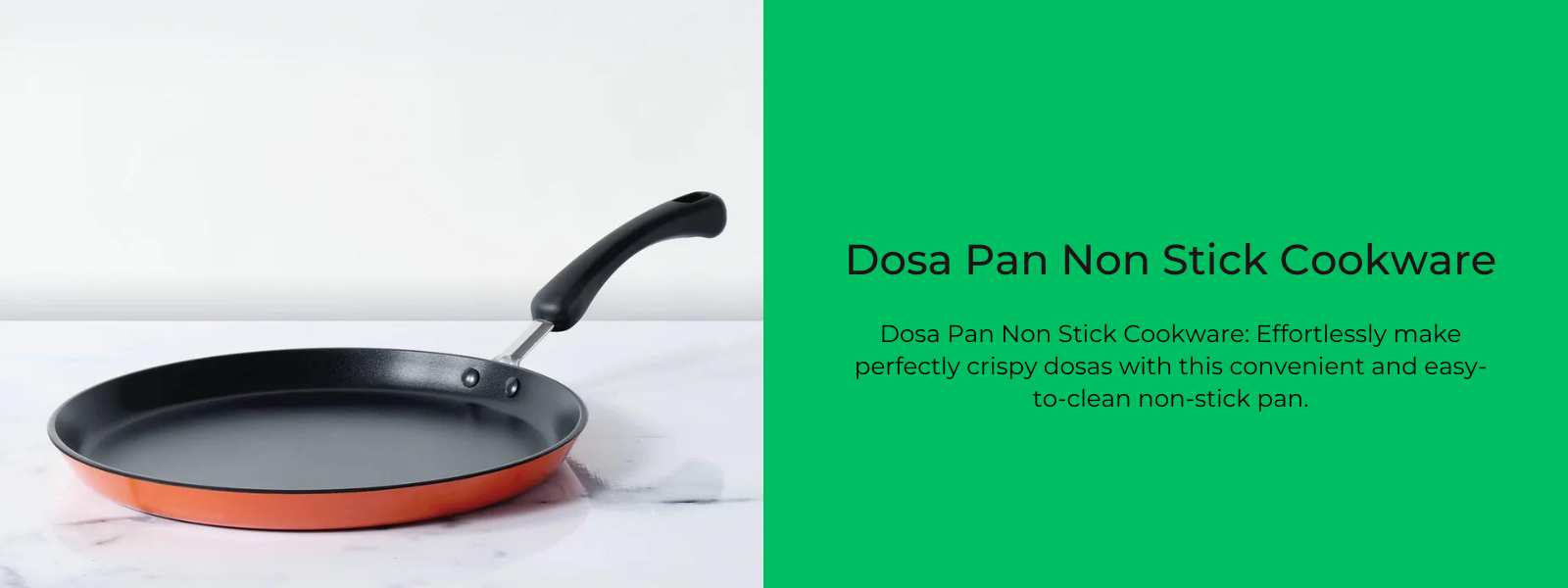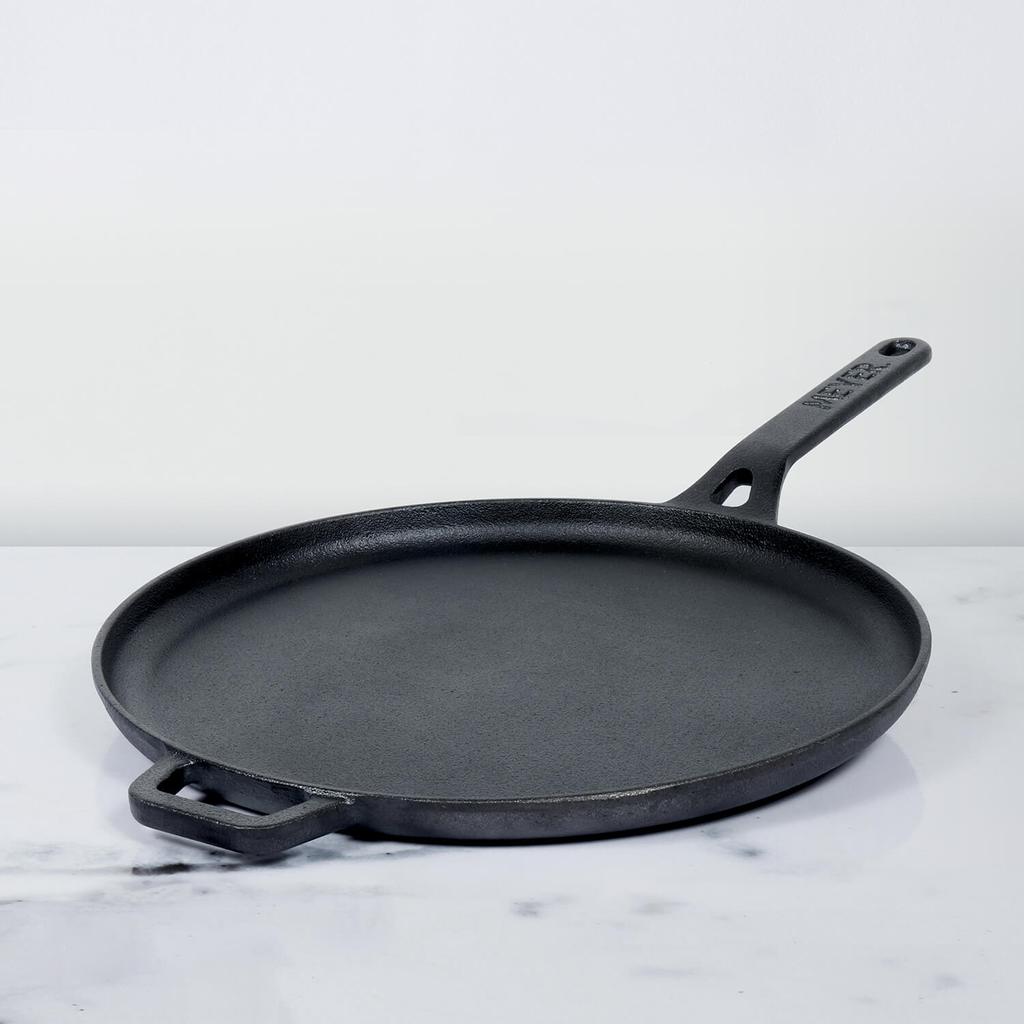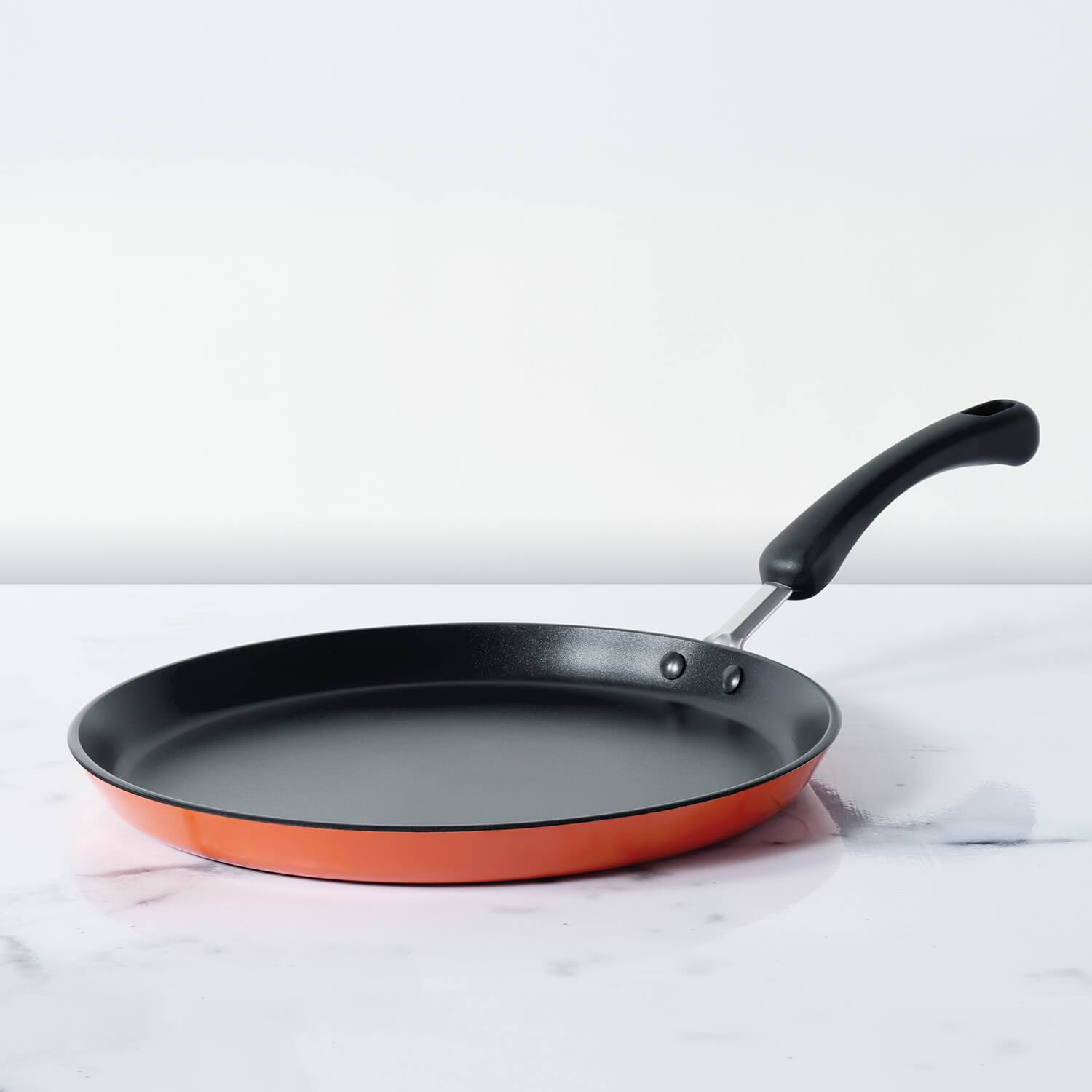A dosa pan, also known as a dosa penam and dosa tawa, is a type of flat and shallow pan that is specifically designed for cooking dosas, a popular South Indian dish. Dosas are thin, crispy, and savory crepes made from a fermented batter of rice and urad dal (black gram).
Typically made from materials like cast iron, aluminum, or stainless steel, the dosa pan features a flat surface with slightly raised edges, facilitating the effortless spreading of the dosa batter and ensuring even cooking. Its distinctive design and even heat distribution make it a vital tool for achieving the characteristic texture and flavor of dosas, which are often enjoyed with various accompaniments in South Indian cuisine.
Table of Contents
Design and Material of Dosa Penam:
- A dosa pan or a dosa penam typically has a flat cooking surface with a slight curvature at the edges to prevent the batter from spilling.
- It is usually made from materials like cast iron, aluminum, or stainless steel.
- Some modern dosa pans come with non-stick coatings to make cooking and flipping dosas easier.
Size of a Dosa Penam:
- Dosa pans come in various sizes, ranging from small to large.
- The size you choose depends on the number of dosas you want to cook at once and your personal preference.
Usage of Dosa Penam:
- To use a dosa pan or a dosa penam, it is heated over a stove or a burner.
- In order to avoid the batter from sticking to the dosa penam, a thin layer of oil or ghee (butter that has been clarified) is typically sprinkled over the surface.
- Once the pan is sufficiently hot, a ladleful of dosa batter is poured onto the center of the pan and quickly spread in a circular motion to create a thin layer.
Cooking in a Dosa Penam:
- The dosa is cooked on medium to high heat until the bottom surface becomes golden and crispy.
- Dosa pans are designed to provide even heat distribution, ensuring that the dosa cooks uniformly.
Types of Dosa Penam
- Some dosa pans come with specialized features, such as a non-stick surface, heat-resistant handles, or induction compatibility.
- There are also electric dosa pans available that can be used to make dosas without a stovetop.
Maintenance of Dosa Penam:
- Traditional cast iron dosa pans require seasoning to maintain their non-stick properties and prevent rust. Non-stick dosa pans are relatively easier to clean and maintain.
In South Indian cuisine, dosas are a staple and often enjoyed with various accompaniments such as coconut chutney, sambar, or potato masala. Whether you're a seasoned dosa maker or just beginning to experiment with this cuisine, having a proper dosa pan can make a significant difference in achieving the perfect dosa texture and flavor.
Origin of Dosa Pan in India:
The origin of the dosa pan or dosa penam is closely tied to the origin of the dosa itself and the traditional cooking methods of South India. Dosas are a popular South Indian dish, and the dosa tawa was specifically designed to make the preparation of dosas more efficient and effective.
It is generally agreed that the dosa was developed in the southern regions of India, more specifically in the states of Tamil Nadu, Karnataka, Kerala, and Andhra Pradesh. It has been there for a very long time and is firmly established in the food customs that are associated with the area. In the beginning, dosas were cooked on earthenware griddles or stone slabs that were placed over open fires.
As cooking methods evolved and modern kitchen equipment became more accessible, the dosa tawa or dosa penam was developed. The dosa tawa is a flat and shallow pan designed to provide even heat distribution, making it easier to create the thin and crispy texture that dosas are known for.
The exact timeline of the dosa tawa's origin is not well-documented, as it likely evolved gradually as cooking techniques advanced. Over time, dosa tawas have been made from various materials such as cast iron, aluminum, and stainless steel, and modern variations include non-stick coatings for added convenience.
The dosa tawa remains an essential tool in South Indian households and restaurants, where dosas are a staple part of the cuisine. It has become synonymous with dosa making and is a testament to the rich culinary heritage of the region.
Difference Between A Dosa Pan And Roti Pan:
Whether a dosa pan or a roti pan is better depends on your cooking preferences and the types of dishes you frequently prepare. Both pans have specific features that make them suitable for different purposes:
Dosa Pan:
- Purpose: A dosa pan (dosa tawa) is specifically designed for making dosas, thin and crispy South Indian crepes.
- Features: It has a flat surface with slightly raised edges, enabling easy spreading of dosa batter and even cooking.
- Versatility: While its primary use is for dosas, it can also be used for other flatbreads like chapatis and pancakes.
- Even Cooking: Dosa pans are designed for even heat distribution, crucial for achieving the perfect texture of dosas.
- Traditional Cuisine: If you often prepare dosas or enjoy South Indian cuisine, a dosa pan is a valuable addition.
- Non-Stick Options: Many dosa pans come with non-stick coatings for ease of cooking and cleaning.
Roti Pan:
- Purpose: A roti pan is generally used for making rotis (chapatis) and other similar flatbreads.
- Features: It's usually a round, flat pan with no raised edges, allowing for easy rolling and cooking of rotis.
- Specialized Purpose: While it's excellent for rotis, it might not be as suitable for dosas due to the lack of raised edges.
- Even Cooking: Roti pans should provide even heat distribution to ensure uniform cooking of rotis.
- Multi-Purpose Use: A roti pan can be used for other flatbreads, tortillas, and even heating certain foods.
- Broad Applicability: If you often prepare various types of flatbreads beyond dosas, a roti pan is versatile.
Conclusion:
In summary, if you mainly make dosas and South Indian dishes, a dosa pan would be a better choice. However, if you focus on rotis and various flatbreads, a roti pan would suit your needs better. If you frequently prepare both dosas and rotis, having both pans could be advantageous to ensure the best results for each dish.











Leave a comment